
Introduction
The marketing funnel was developed in 1898 by Ad agency executive Elias St. Elmo Lewis. He broke down the marketing journey into four distinct stages including awareness, interest, desire, and action, commonly known by the acronym AIDA. Even today, marketing funnels still use this basic template.
That said, today, marketing companies have adopted slight variances to suit the digital age. The likes of Moz, Hubspot, AWeber, Act-On, Forrester, and Bizible have their own take on the marketing funnel. Before you get the most out of your marketing funnel, it is essential to understand what the marketing funnel is for, what it represents, and how you can build your own. So, without further ado, let’s get right to it.
What is the Marketing Funnel and What is it Used For?
The marketing funnel is a map of the customer journey that is typically organized in a set of stages that the marketer uses to measure how effective their efforts are at directing new leads into the funnel and how efficiently those leads convert through each step.
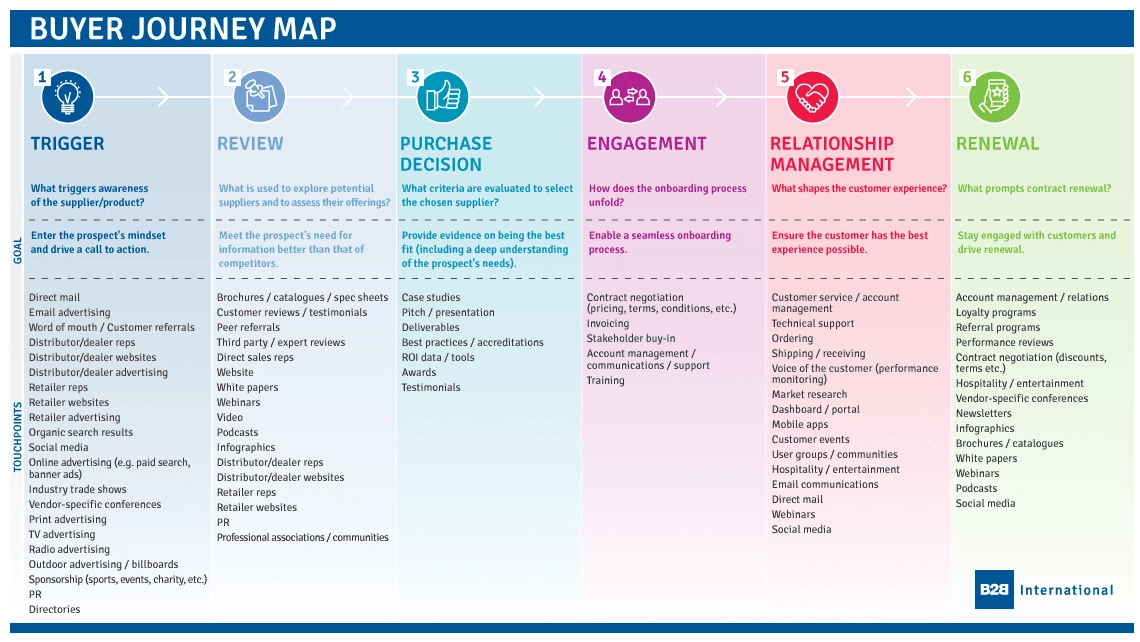
Figure 1: The buyer’s journey
As such, the marketing funnel is used for defining and improving a companies marketing strategy. For example, a content writer can use a marketing funnel to understand the different types of content in the context of the customer’s journey. For instance, an email can be used to drive brand awareness or to enable seamless onboarding. A demand generation director, on the other hand, will use a marketing funnel from a statistical viewpoint to understand the conversion rate and revenue that each stage in the funnel and every marketing channel generates.
What Does the B2B Marketing Funnel Represent?
It is essential to understand that the B2B marketing funnel is merely a guiding principle and an idyllic illustration of the customer journey. In the ideal situation, a marketer could basically place a few Ads and get Ad impressions right away. The visitors would then visit the marketer’s website, download content (lead conversion) and be so impressed that they immediately contact sales to close a deal. However, in reality, it rarely happens in this way. We all know how elaborate, long, convoluted and even how messy each stage of the buyer’s journey can be.
The fact is that there are several different possible touchpoints in the funnel, but marketers can only focus on a chosen few to maximize their efforts and get the most out of the funnel. The marketing funnel is, therefore, a simplified version of the customer’s journey that is used by marketers to optimize channels and reduce waste in an easy to understand format. It is used to try and solve a variety of creative and technical challenges that the marketer faces.
How to Build Your Own Marketing Funnel
To create your own B2B marketing funnel, it is crucial to understand how your customers actually journey through it.
Marketers have used lead generation from the pre-digital age and still use it today to create new contacts for sales. The challenge with lead goals is that they focus heavily on quantity at the expense of the quality of the leads. In the digital age where capturing complex data and insights (almost in real-time) through analytics is the norm, focusing only on the number of leads is unacceptable. Focusing on quantity over quality misaligns sales and marketing teams because sales teams are not able to follow through on the leads that marketing teams gather. Thankfully, the focus is shifting to improving conversion rates, revenue, and aligning sales and marketing, building loyalty, creating customers that are advocates, and having customers come back for more.
One of the strategies that have been used to turn things around is pipeline marketing data. Pipeline marketing combines marketing and sales data to focus on converting prospects and leads into customers instead of endlessly generating more leads.
Entrepreneurs and marketers use pipeline marketing data to improve decision making, make the sales funnel less costly and more efficient, and to ultimately improve revenue. Pipeline marketing is also one of the tools that are used to understand the customer journey.
In a nutshell, pipeline marketing consists of all channels and campaigns including Inbound marketing, content marketing and lead nurturing, all done to help grow B2B marketing efforts (growth hacking).
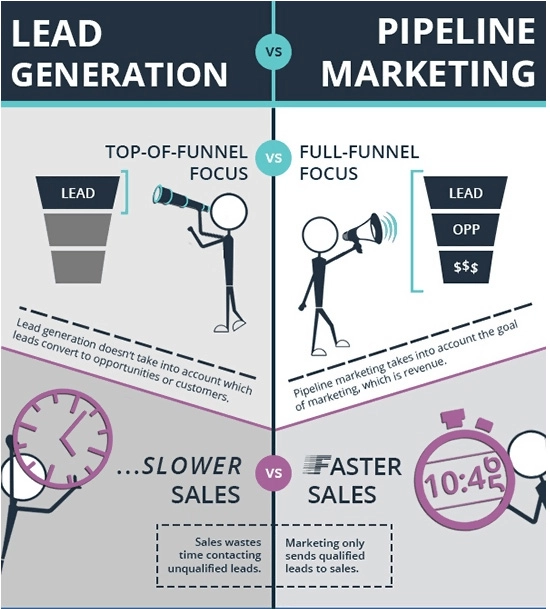
Figure 2: Lead generation vs. Pipeline marketing
Different Types of Marketing Funnels
Through pipeline marketing, marketers can move beyond traditional lead generation and into the new format where the following distinctions differentiate and improve the marketing funnel:
- Every stage of the funnel is used as an opportunity for growth
- The funnel goes beyond the purchase and considers customer loyalty and advocacy
- The marketing funnel is not always viewed as being linear.
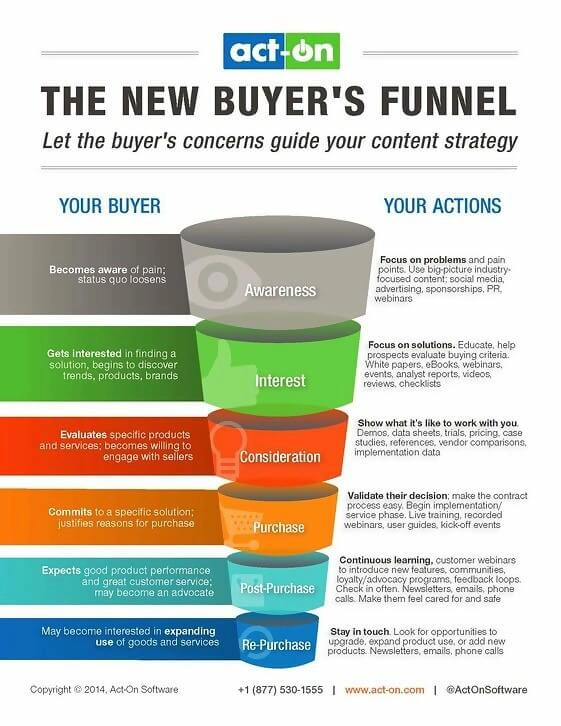 3: Figure Act-On marketing funnel
3: Figure Act-On marketing funnelHow to Optimize Your Marketing Funnel
Top of the Funnel
The top of the funnel (TOFU) is where you generate traffic. The prospect has just begun researching all available solutions and is still unsure about their exact needs with the product or the technical requirements. They are still shopping around trying to understand the different brands that may have the best solution to their pain point.
Most online marketers are quite familiar with the channels, tactics, and strategies that are best suited for this part of the funnel and may fail to realize that there is a lot that could be done to optimize it.
The Problem
Everyone has heard the famous adage ‘content is king’ and that having high-quality content that is search engine optimized is just as crucial. However, it is easy to forget that, when it comes to conversions, where your visitors learn about you or where they come from, matters a lot, (if not more than) the high-quality content. In short, if you have a robust marketing funnel driven by high-quality content, but the traffic is mostly people who are not interested in your product, and therefore, drop off the funnel immediately, then clearly, this is a problem.
The Solutions
Re-focusing your content on driving high-quality traffic is the obvious first step to take, and there are numerous tactics and methods that you can use to do so.
- Create fresh content that is keyword-optimized to draw-in people interested in what you have to offer.
- Optimize (or re-optimize) your PPC keywords and display Ads
- Leverage the power of social media
- Recalibrate the targeting in your social media Ads
According to the Content Marketing Institute Benchmarks, Budgets and Trends report for 2019, one of the characteristics of top performing B2B content marketers is that they measure the ROI of their marketing efforts. Measuring ROI helps marketers to avoid spreading their budget too thin and to instead refocus on where the most gains can be made.
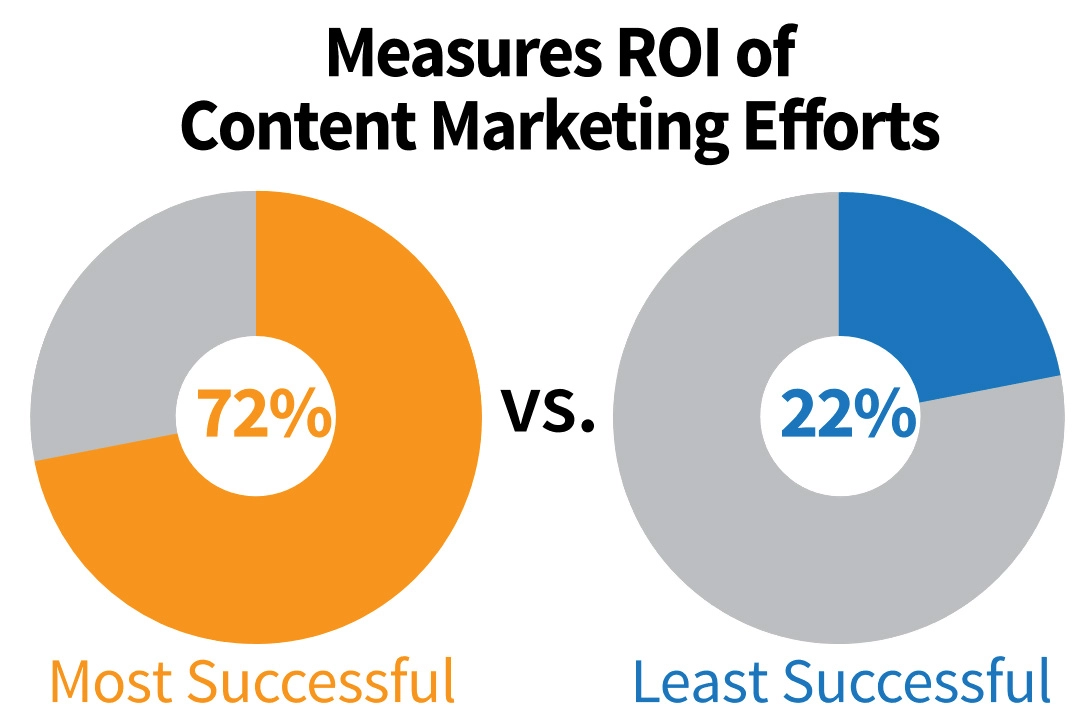
Figure 4: Measuring the ROI of content marketing efforts is vital for success
Middle of the Funnel
The middle of the funnel (MOFU) is about holding the attention of the people that you have drawn into the top of the funnel. At this point, your target audience has an idea about the brands that can solve their pain points and have signed up to email campaigns to receive more information about possible solutions. If you have done your job right, you are one of these brands. All you have to do now is to meet expectations about what the lead wants to know and show that you can provide excellent value and quality.
Depending on the length of the conversion path and the specific conversion goals, there will be a variety of interactions with the leads to earn their loyalty. Understanding your customer, their expectations, and their state of mind at this stage is crucial to success.
The Problem
One of the main issues at this stage of the funnel is that there is usually an abundance of content that is being read but the content is not addressing the leads specific needs, and there are, therefore, not converting to the next stage.
The Solution
Collecting feedback from your leads, using A/B testing, and tracking key metrics is critical to understand the leads state of mind. Some of the useful tools that you can use at this stage include product reviews, price comparisons, testimonials, case studies, community forums, various merchandising techniques, engaging content, and automated marketing campaigns.
Additionally, you need to ask yourself why leads are not converting. Usually, it’s one of three reasons:
- They are interested in your product, but there is no immediate urgency yet
- They are interested but cannot afford it right away
- They do not yet trust you enough
To address these challenges,
- First, you must communicate the value of your offer in a way that the lead will appreciate. In essence, how much value can your solution deliver to address their pain points?
- Secondly, find different ways to encourage trust including using some of the tools mentioned above.
- Third, find different ways to convey urgency. For example, limited inventory, exclusive offers, discounts, etc.
Bottom of the Funnel
At the bottom of the funnel (BOFU) leads have decided on their favorite brands and now want to know what they will actually get for their money. They may also have already purchased your product.
 Figure 5: Content used by B2B marketers for experiential purposes and to remain top-of-mind
Figure 5: Content used by B2B marketers for experiential purposes and to remain top-of-mind
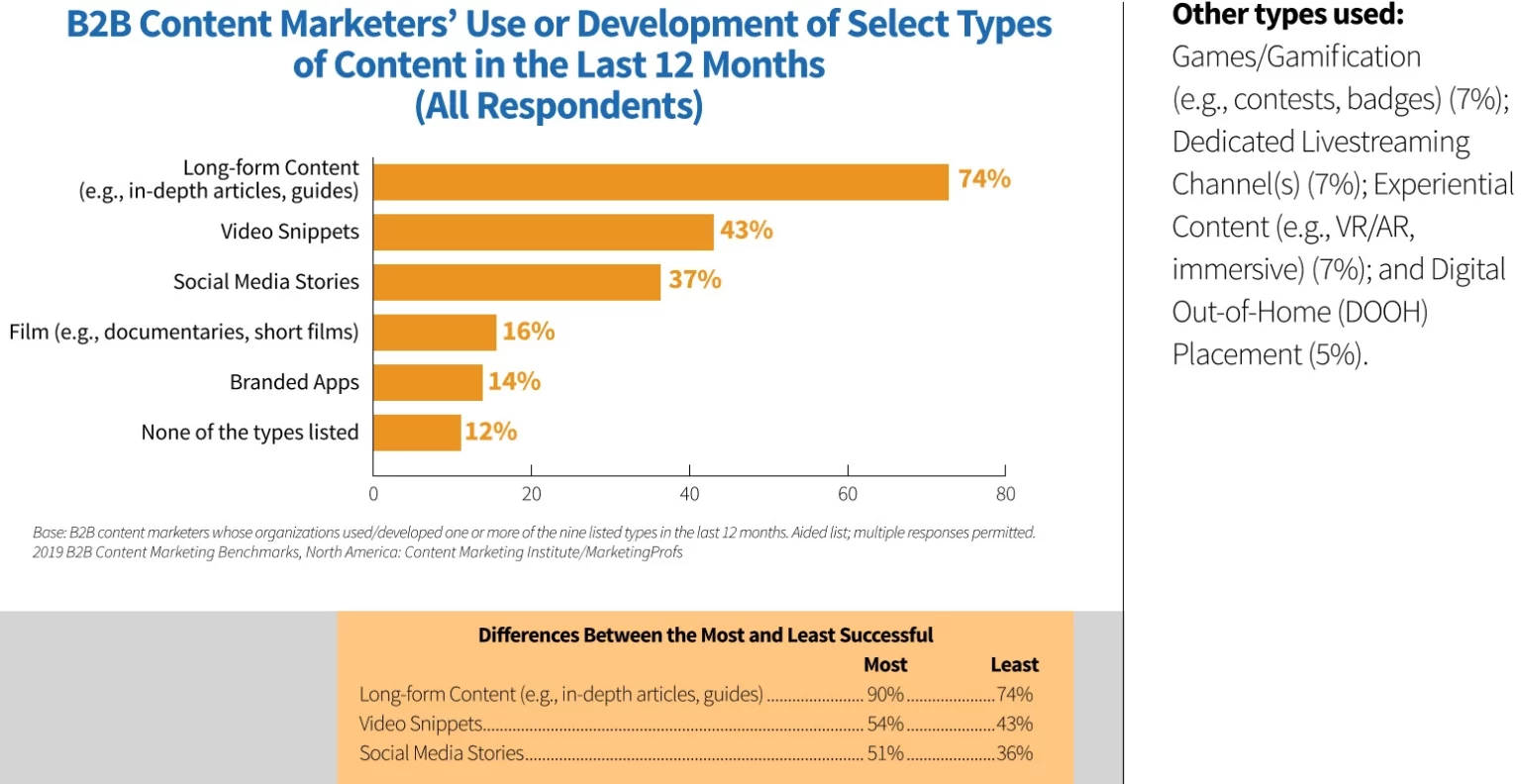 Figure 5: Content used by B2B marketers for experiential purposes and to remain top-of-mind
Figure 5: Content used by B2B marketers for experiential purposes and to remain top-of-mindThe Problem
Just because leads have converted up to this stage doesn’t mean that they will buy from you or that they will continue to buy from you. They probably still have to choose from one or two other favorite brands. At this point, the lead needs to feel a personal or emotional connection to your brand, and if this is lacking, then you have a problem.
The Solution
Having personal data to create personalized, targeted experiences is crucial to keep leads interested, follow through, and want more. Consistently building rapport through offers and email campaigns, even after the lead becomes a customer is critical. The idea is not to let lead nurturing efforts fall by the wayside and instead find ways to integrate support, personalization, and rapport into their lifestyle.
The Bottom Line: Optimize Your Sales Funnel
It is important to remember that the marketing funnel should be seen as a guiding principle and not a tactic or strategy. Any marketer that is worth their salt will use A/B testing, predictive modeling, attribution modeling, and such techniques or strategy for their B2B marketing.
If your plans are not working as well as you wish, then you should re-evaluate how you think about your marketing funnel and re-strategize to maximize the value that you get at each stage of the funnel. It is also crucial to remember that sometimes, conversion rates may slip, but revenue may go up. In other words, the conversion rate isn’t everything, and there is no ideal conversion rate. The ultimate goal is to ensure that your marketing funnel brings in more sales, builds more loyalty, creates customers that are advocates, and keeps customers coming back for more.
Our blog
Latest blog posts
Tool and strategies modern teams need to help their companies grow.

B2B companies must generate leads that are ready to buy their products in order to me...

In the absence of a constant flow of leads, sales teams can't meet their targets and ...

Podcasts and webinars are powerful tools that marketers can use to reach new audience...



